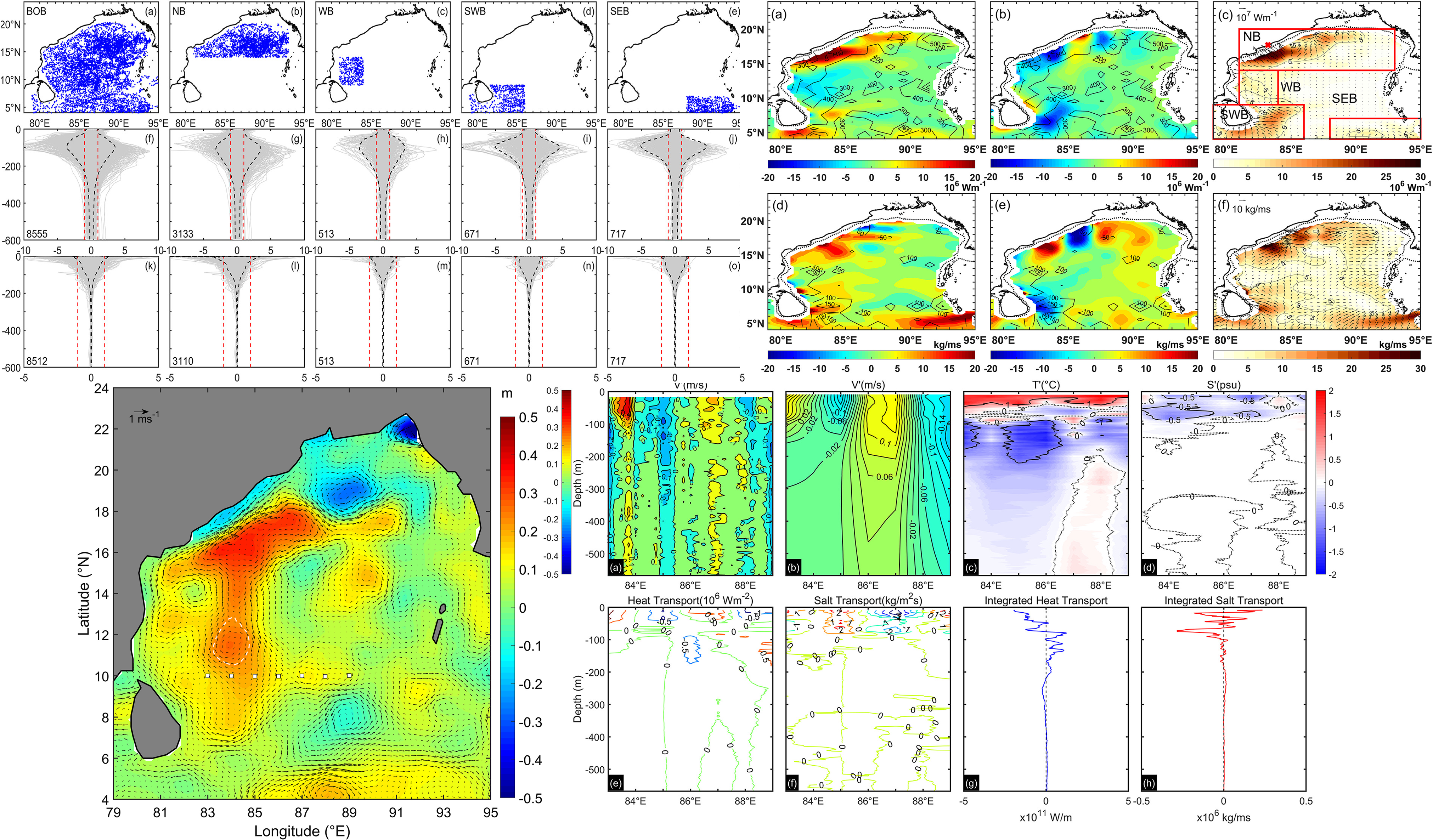Seasonal eddy-induced heat transport in the Bay of Bengal

Investigated the role of mesoscale eddies in redistributing heat and salt across the Bay of Bengal (BOB), a critical region for monsoon dynamics and climate variability. Using satellite altimetry data (SEALEVEL_GLO_PHY_L4_MY_008_047), in situ measurements from Argo floats, and CTD casts, remotely sensed wind data from the Cross-Calibrated Multi-Platform (CCMP) product, climatological data from the NOAA NCEP World Ocean Atlas (WOA), and eddy-resolving ocean circulation data from the Ocean General Circulation Model For the Earth Simulator (OFES), we quantified turbulent transport mechanisms and identified key subregions—western boundary currents, Sri Lanka’s southwestern coast, and the southeastern BOB—where eddy activity peaks seasonally.
Key Findings:
- Identified distinct seasonal hotspots: mesoscale eddies are highly active in four subregions of the BOB, with distinct seasonal patterns, pre-summer monsoon (March–April) in the northern BOB, summer monsoon (May–September) near Sri Lanka, and post-summer monsoon (October–November) in the western and southeastern BOB.
- Demonstrated that zonal transport is as significant as meridional transport due to the BOB’s semienclosed geometry, challenging traditional poleward-centric models.
- Validated depth confinement of eddy-induced heat transport: heat anomalies within 400 m and salt anomalies within 200 m, using Argo-derived climatologies.
- Baroclinic instability is the primary driver of eddy energy, with barotropic instability also playing a role in the southeastern BOB (— Mechanisms and their regional influences).
- 2.5-layer reduced gravity model analysis reveals that strong flow speed changes and weak water layering are crucial for generating energetic eddies (— Modeling approach in deriving the results).
- Discovered that baroclinic instability, driven by vertical shear and weak stratification, dominates eddy kinetic energy (EKE) generation in western boundary currents, modulating seasonal transport (— A wider context with physical drivers (shear, stratification) and seasonal modulation).
Methodological Highlights:
- Utilized a combination of satellite altimetry, in situ measurements, climatological data and ocean model data to analyze eddy dynamics.
- Conducted a comprehensive analysis of seasonal eddy-induced heat and salt transport across the BOB.
- Applied linear stability analysis within a 2.5-layer reduced gravity model framework to investigate baroclinic, shear-driven instability and its role in modulating eddy kinetic energy (EKE)
- Developed seasonal eddy diffusivity maps using Stammer’s framework, integrating SSH autocovariance and tracer gradients (WOA13).
- Combined observational and model data (OFES) to partition energy budgets, revealing baroclinic instability as the primary driver in 3 of 4 subregions.
- Provides a comprehensive understanding of mesoscale eddy dynamics in the BOB, crucial for climate and monsoon studies.
- Challenges traditional views on eddy transport, emphasizing the importance of zonal transport in semienclosed basins.
- Offers insights into the seasonal variability of eddy-induced heat and salt transport, enhancing predictive capabilities for climate models.
- Contributes to the understanding of oceanic processes that influence regional climate variability and monsoon dynamics.
Significance:
Impact: This work advances understanding of how eddies regulate BOB’s thermohaline structure, with implications for monsoon predictability and regional climate models. Findings were published in Journal of Geophysical Research: Oceans
Software/packages used: MATLAB